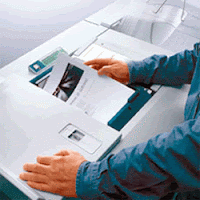The multi-function printer, or MFP, has become an extremely valuable piece of equipment in the modern office. This versatile device eliminates the need for standalone printers, copiers, scanners, and fax machines, saving you space and money while benefiting the environment, as well.
Once you’ve decided to opt for an MFP (or replace your existing unit), the next step is to find the right machine for your organization. However, with so many choices out there, this decision can appear complicated — of all the machines available, which one is best-suited to handle your specific needs?
Selecting the right MFP is important to ensure that you end up with a machine that will meet your business needs, keep up with your workload, and prevent you from overspending on a unit. So how can you be sure to choose the right MFP for your office? Here are some things to consider:
Define Your Needs – Take the time to go over your requirements and determine what you’ll need from an MFP. What will you be using it for, and how often? Will you be working with black and white or color documents? Which is more important to you, the speed and quantity, or the quality of your prints and scans? Which features, bells, and whistles will be beneficial or necessary to your operation?
Evaluate Initial Investment vs. Total Cost of Ownership (TCO) – Consider not only the initial cost of an MFP but the cost of supplies and maintenance over the lifetime of the unit. What may seem like a bargain up front can end up costing you much more over the long run. Also, consider asking your office equipment provider if leasing an MFP might be more cost effective, since sometimes lease agreements include regular service and some supplies.
Learn Your Specs – MFP specifications can seem like a foreign language (DPI, RAM, PPM, etc.). Get to know what these industry specs mean, and what they mean to you. An impressive DPI (dots-per-inch) won’t be a requirement for you if your office will only be scanning documents and forms.
Demand Compatibility – Determine which operating systems are used by your staff and select an MFP that will be compatible. And it is essential you choose a machine that will easily integrate into your existing network.
Seek Expert Advice – If you’re still not sure which MFP is right for your office, ask your local office equipment provider to help you make a good choice. They truly know it all when it comes to these machines, and can also support you with local, reliable service after your MFP is in place.
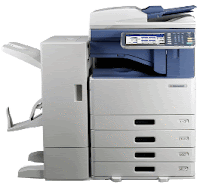 Toshiba e-STUDIO2550C
Toshiba e-STUDIO2550C
Discover the true meaning of high productivity with the award winning e-STUDIO 2550c. Toshiba’s e-STUDIO2550c is Better Buys for Business’ 2012 Innovative Product of the Year. The e-STUDIO2550c is recognized for producing vibrant documents with an up to 600 x 1,200 dots-per-inch resolution and superior performance within a compact and lightweight design ideal for small to medium-size businesses.
Find Out More


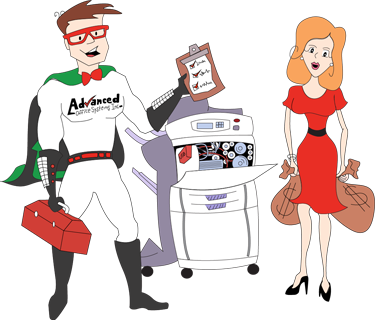
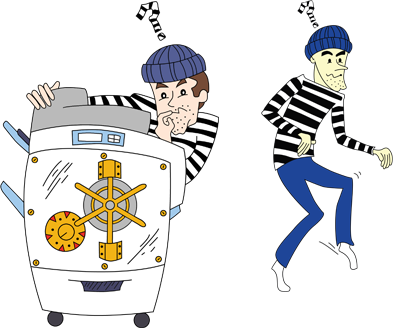



 As is the case with about every new product or service entry, the evolution of managed print services, or MPS, has been a work in progress. However, there are three aspects about MPS everyone can – and probably should – agree upon. Foremost, life is significantly easier for those managing offices who receive this vital service.
As is the case with about every new product or service entry, the evolution of managed print services, or MPS, has been a work in progress. However, there are three aspects about MPS everyone can – and probably should – agree upon. Foremost, life is significantly easier for those managing offices who receive this vital service. Mobile devices and the use of cloud collaboration services are growing rapidly. This is true for sharing information between business partners, customers and even internal users. It’s very easy to drag files on your PC into a folder and access them from a smartphone, tablet or another computer. It’s also easy to sync information between multiple devices quickly.
Mobile devices and the use of cloud collaboration services are growing rapidly. This is true for sharing information between business partners, customers and even internal users. It’s very easy to drag files on your PC into a folder and access them from a smartphone, tablet or another computer. It’s also easy to sync information between multiple devices quickly.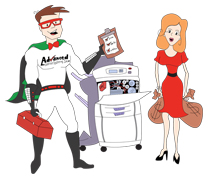 Even in a booming economy, businesses small and large are constantly looking for ways to tighten their financial belts. An often untapped area for savings is the print environment, and in the modern office, that can add up to a significant amount of money. Here are some ways your company can spend less money on ink, toner, and paper.
Even in a booming economy, businesses small and large are constantly looking for ways to tighten their financial belts. An often untapped area for savings is the print environment, and in the modern office, that can add up to a significant amount of money. Here are some ways your company can spend less money on ink, toner, and paper. Most of us have insurance for our homes, cars and life. Businesses have insurance against errors and omissions, general liability, malpractice, loss of business, and a hundred other things. We all have insurance against losing what is most valuable.
Most of us have insurance for our homes, cars and life. Businesses have insurance against errors and omissions, general liability, malpractice, loss of business, and a hundred other things. We all have insurance against losing what is most valuable. Now that spring has officially arrived, it’s time to think about a little spring cleaning in the office. The average office is overloaded with outdated, money draining output devices that not only increase monthly costs, but also your company’s carbon footprint. You might also notice a lot of unwanted pages next to your printers. It’s time to take a look at your output and see how to make a few improvements.
Now that spring has officially arrived, it’s time to think about a little spring cleaning in the office. The average office is overloaded with outdated, money draining output devices that not only increase monthly costs, but also your company’s carbon footprint. You might also notice a lot of unwanted pages next to your printers. It’s time to take a look at your output and see how to make a few improvements. Toshiba e-STUDIO2550C
Toshiba e-STUDIO2550C Let’s face it – the cost of constantly replacing ink and toner cartridges can have a significant impact on your bottom line. However, there are steps you can take to cut down on the number of print cartridges your office uses.
Let’s face it – the cost of constantly replacing ink and toner cartridges can have a significant impact on your bottom line. However, there are steps you can take to cut down on the number of print cartridges your office uses.